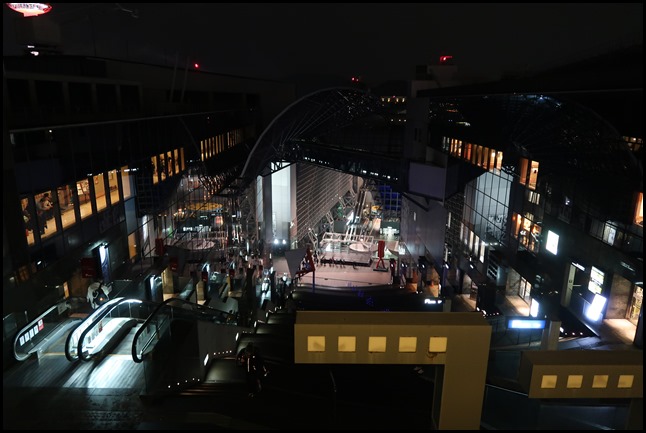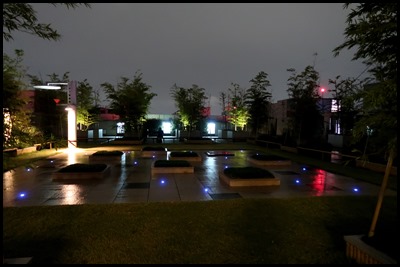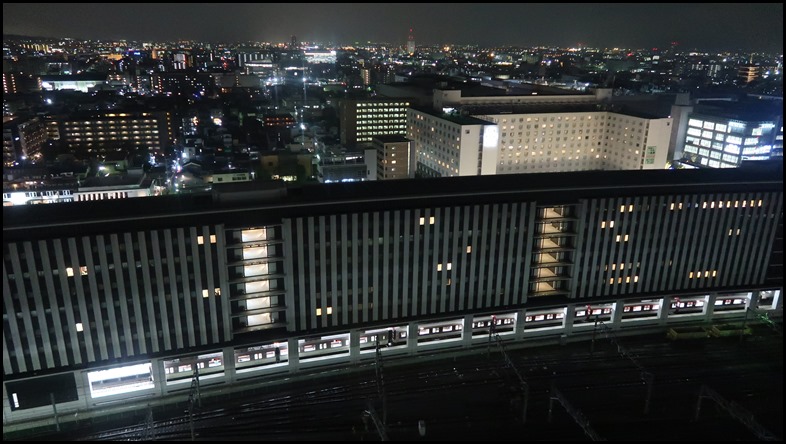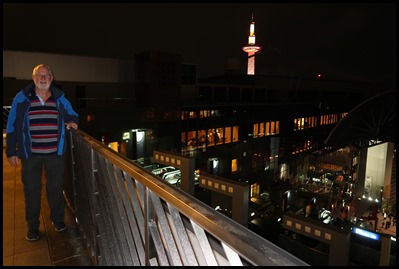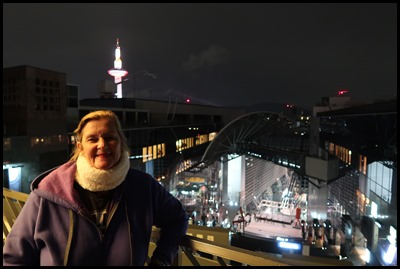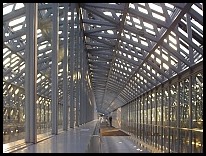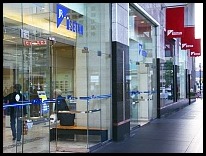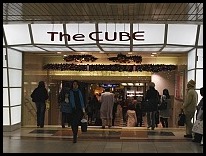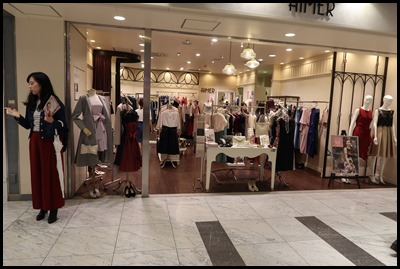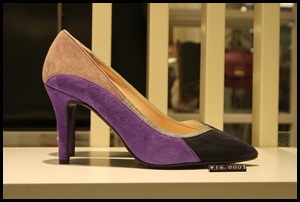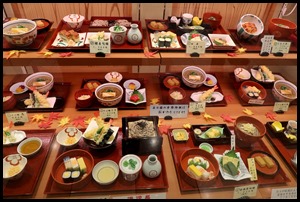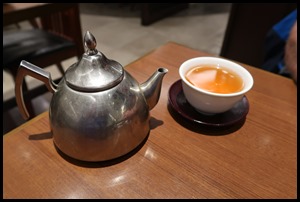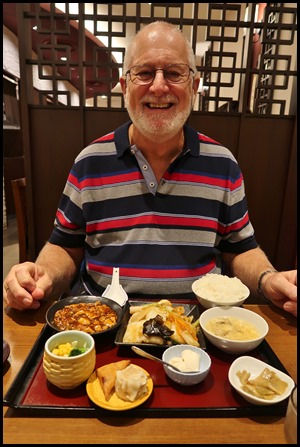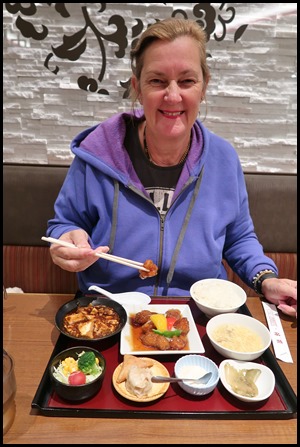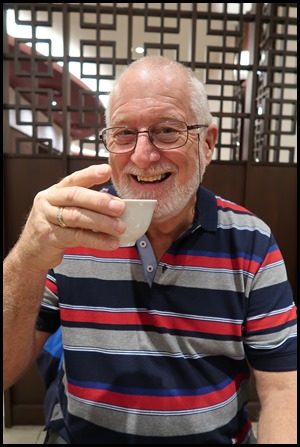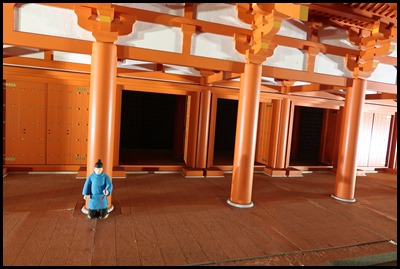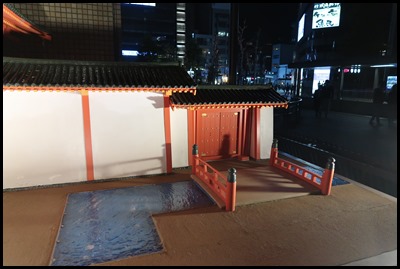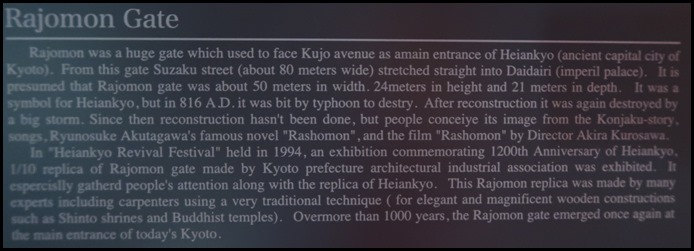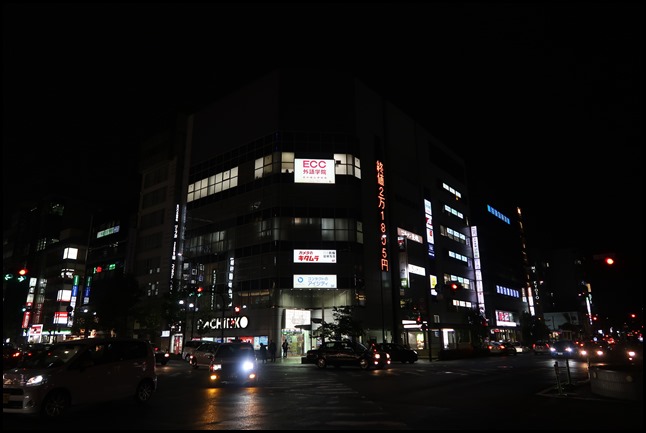Kyoto Station

|
Kyoto Train
Station
 Cases dropped in our digs, we walked
the eleven minutes back to Kyoto Station to explore
and find supper.
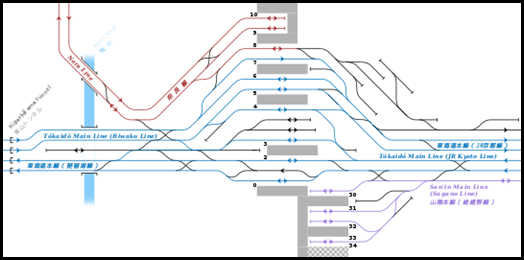 Kyoto Station is the city's transportation hub, served by Japan Railways (including the
Tokaido
Shinkansen), Kintetsu Railways and the
Karasuma Subway Line. It is also the site of a large bus terminal for city
buses and long distance and overnight
highway
buses.
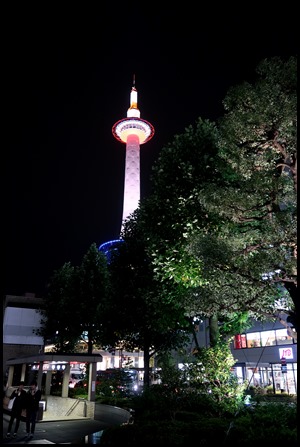 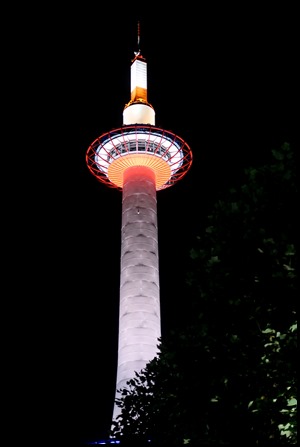 There are two sides to Kyoto Station: Karasuma and Hachijo. The busier Karasuma side to the north faces downtown and is named after the main street leading downtown. The main bus terminal is located on the Karasuma side, as are many hotels, shops and Kyoto Tower. The calmer Hachijo side to the south provides access to a few more hotels, Toji Temple and some more highway bus stops. 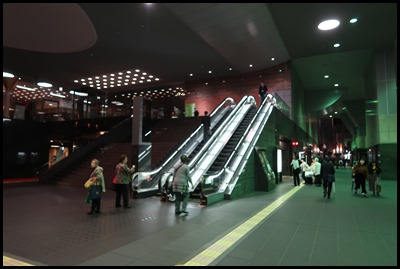 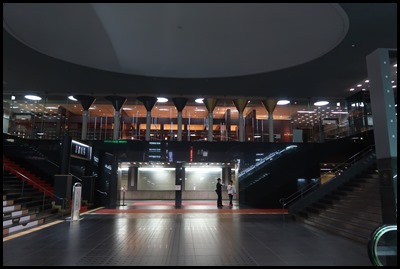 The first part of
the walkway and the theatre
entrance...........
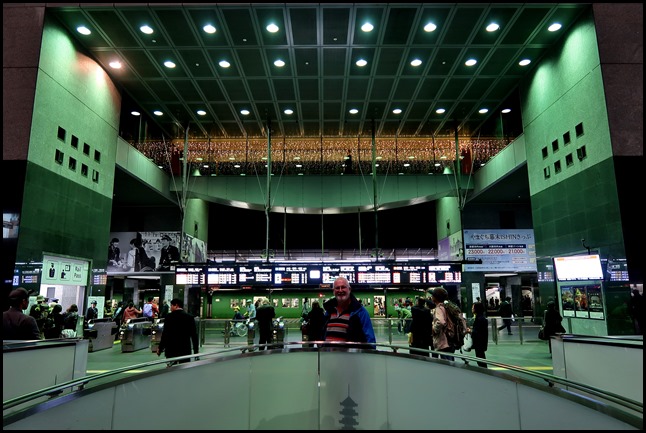 .............even the platform entrance didn’t prepare us for when we looked
up.
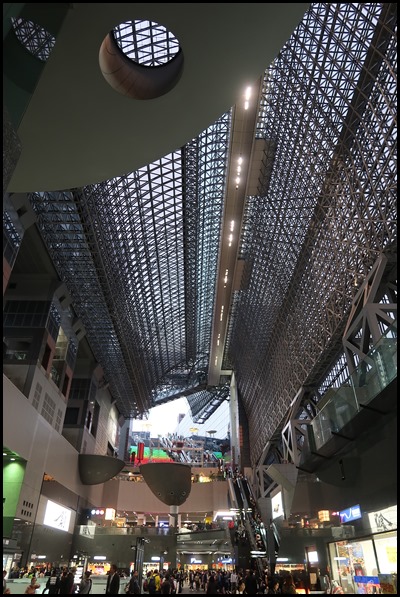 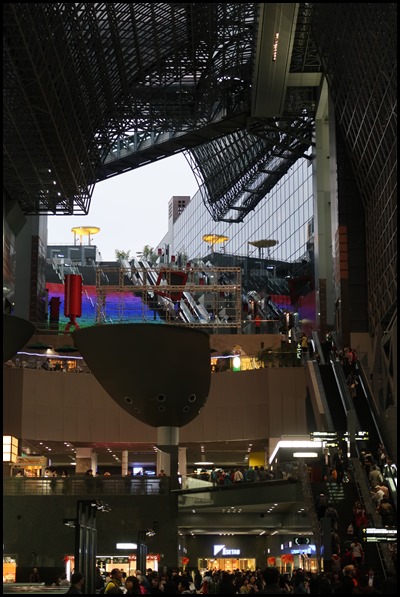 Wow. We were looking up to the 12th floor, to the right seven sets of
escalators. The green and red flash (blue and red in the picture on the right)
is actually a light show on the staircase between the
7th and 11th floors.
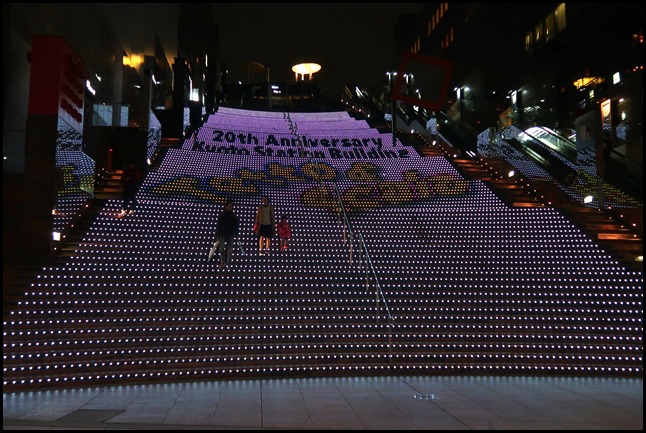 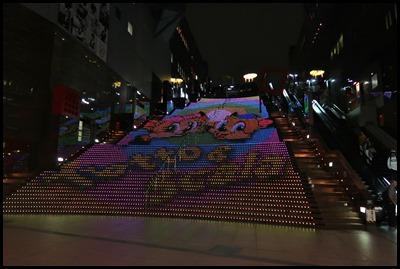 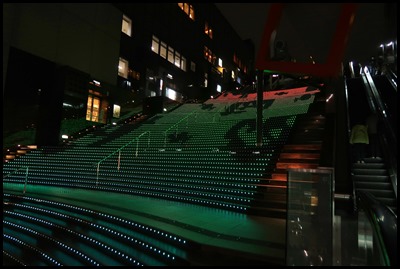 We rode the escalators and stopped off
to watch a part of the light show that celebrates the
20th anniversary of the station.
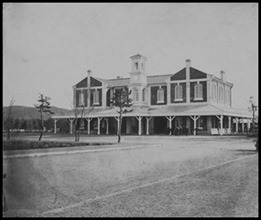  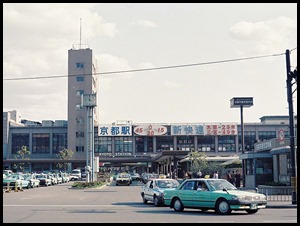 The first,
second and third Kyoto Station
History: The governmental
railway from Kobe reached Kyoto on the
5th of September 1876, but the station was under construction and a temporary
facility called Ōmiya-dōri (Ōmiya Street) Temporary Station was used until the
opening of the main station. The first Kyoto Station
opened for service by decree of Emperor Meiji on the 5th of February 1877.
In 1889, the railway became a part of the trunk line to Tokyo (Tokaido Main Line). Subsequently, the station became the terminal of two private railways, Nara Railway (1895, present-day Nara Line) and Kyoto Railway (1897, present-day Sagano Line), that connected the station with southern and northern regions of Kyoto Prefecture, respectively. The station was replaced by a newer, Renaissance-inspired facility in 1914, which featured a broad square (the site of demolished first station) leading from the station to Shichijō Avenue. Before and during World War II, the square was often used by imperial motorcades when Emperor Showa traveled between Kyoto and Tokyo. The station was spacious and designed to handle a large number of people, but when a few thousand-people gathered to bid farewell to naval recruits on the 8th of January 1934, seventy-seven people were crushed to death. This station burned to the ground in 1950, and was replaced by a more utilitarian concrete facility in 1952. It is Japan's second-largest station building (after Nagoya Station) and is one of the country's largest buildings, incorporating a shopping mall, hotel, movie theatre, department stores and several local government facilities under one 15-story roof. In 2015 forty four million people used the station...........
At the top looking down.
Behind us a roof garden called Happy Terrace.
To our left, we looked out over the station as a train came in, behind the sprawling city of Kyoto.
We both posed at the top.
Quite a view out to our left.
Shopping: The Skyway tunnel allows visitors to walk the length of Kyoto Station, 45 meters above the central hall. The Skyway's glass windows provide views of the city and station below. It starts from the restaurant floor on the 11th floor of the station building. JR Kyoto Isetan department store occupies 10 stories in the western portion of the station building. Goods on sale include clothing, accessories, fresh food, local souvenirs, stationery and more. Isetan also has a small art museum on its 7th floor as well as a range of restaurants on the 11th floor. The Cube is a shopping mall in the basement of the Kyoto Station building. It offers a lot of local souvenirs, such as sweets and pickles on the first basement floor, and fashion and accessories on the second basement floor. Some of the restaurants on the building's 11th floor is also considered part of The Cube.
We went all the way down to the basement shopping mall called Porta. Every designer shop imaginable. Kyoto Station extends underground into the Porta shopping mall. The mall is located under the bus terminal and plaza on the Karasuma side of the station and offers roughly one hundred shops and restaurants, as well as access to the Karasuma Subway Line.
These beauties were a hundred and six pounds. We looked at hundreds of plastic dishes and settled in a Chinese and were soon sipping the ‘welcome tea’ – a bit on the eye watering side of bitter to be honest.
Bear chose the set menu that had sweet and sour prawn, I had the one that included sweet and sour pork, washed down with a little hot sake and freezing cold water. Our dishes, tea and water came to eight pounds, we shared the 500 mls of sake which was four pounds. People have said we look remarkably slim in these pictures, we can reassure everyone that it is merely kindly camera angles......
Fed and now tired after our long day travelling on a bus, two flights and a train, we headed out of the station to find an enormous model of the Rajomon Gate.
We headed back to our digs via a diagonal crossing, nothing like the one in Tokyo though.
ALL IN ALL AN INCREDIBLE
EXPERIENCE AND SO MANY PEOPLE
AMAZING STRUCTURE, TOTALLY
UNEXPECTED |
